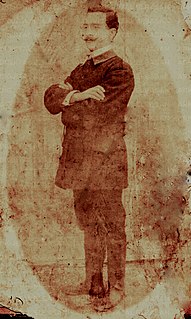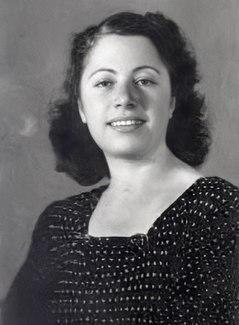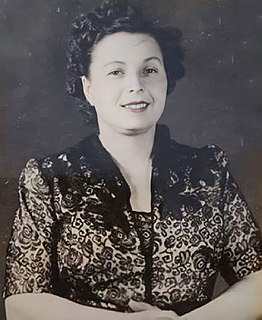Related Research Articles

In music, polyphony is a type of musical texture consisting of two or more simultaneous lines of independent melody, as opposed to a musical texture with just one voice, monophony, or a texture with one dominant melodic voice accompanied by chords, which is called homophony.

The Music of Albania is associated with the country of Albania and Albanian communities. Music has a long tradition in the country and is known for its regional diversity, from the Ghegs in the North to the Tosks in the South. It is an integral part of the national identity, strongly influenced by the country's long and turbulent history, which forced Albanians to protect their culture from their overlords by living in rural and remote mountains.

Fustanella is a traditional pleated skirt-like garment that is also referred to as a kilt worn by men of many nations in the Balkans. In modern times, the fustanella is part of Balkan folk dresses. In Greece, a short version of the fustanella is worn by ceremonial military units such as the Evzones, while in Albania it was worn by the Royal Guard in the interbellum era. Both Greece and Albania claim the fustanella as a national costume. Additionally Aromanians (Vlachs) claim the fustanella as their ethnic costume.
Palokë Kurti (1858–1920) was an Albanian composer, performer, and singer. A native of Shkodër, he was a musical amateur who composed the Unity of Albania March in 1881.
Feim Ibrahimi (1935–1997) was born on 20 October 1935 in Gjirokastër, southern Albania. Essentially self-taught in his early years, he became the first significant Albanian composer to study exclusively in his home country, entering the newly founded Tirana Conservatory in 1962 and studying there with Daija until 1966. He then taught composition, counterpoint and harmony at the conservatory (1966–73), subsequently serving as vice-director of its parent body, the Superior Institute of Arts (1973–7). His most significant post was as music secretary of the Union of Albanian Writers and Artists (1977–91); he later also served as director of the Theatre of Opera and Ballet, Tirana (1991–92). From 1992 until his death he taught theory and composition at the Tirana Conservatory.
The çifteli is a plucked string instrument, with only two strings, played mainly by the Gheg people of northern and central Albania, Southern Montenegro, and Kosovo.
Thomas Nassi was an Albanian-American musician and pioneering music educator in both Albania and the United States, his adopted country.
Pjetër Dungu (1908–1989) was an Albanian piano accompanist and composer-arranger of urban folk music. He is known in the history of the music of Albania as the first compiler of Albanian folk songs.

Thanas Floqi was an Albanian educator and patriot, and one of the signatories of the Albanian Declaration of Independence.
Osman Resul Taka was a Cham dancer and unclear personage from 19th century. The Dance of Osman Taka is named after him. His early life is not clear. He belongs to the Taka clan of Filiates, also known for Alush Taka, an Albanian patriot.
According to narrative sources, his name became well-known during the mid 19th century. He was probably a kachak or klepht fighting the Ottomans in Epirus region. Other sources connect him with the Albanian National Awakening of late 19th century. He was jailed in Yanina and was sentenced to death. When he was asked to give his final wish, he wanted to dance. The folk tradition says that his dance was so beautiful that the local gendarmes of the Ottoman army, did not execute him. After some days he was caught again and was killed in Konispol.

Tefta Tashko-Koço was an Albanian singer and soprano. She was a leading figure in the regional music industry and considered one of the most influential personalities of the 20th century in the Albanian-speaking world.
The Song of Çelo Mezani is an Albanian polyphonic folk song. It is considered to be the best-known Cham Albanian song. The song increased the awareness in Albania about the Chameria region and its history.
Neço Muko (October 21, 1899 – 1934), also known as Neço Muko Himarjoti, was an Albanian singer and composer. His musical style created a new genre of Albanian polyphonic music called avaz himariot, or avaz himariotçe, that became identified with the music of his home region Himarë.

The Albanian Urban Lyric Song is a musical tradition of Albania that started in the 18th century and culminated in the 1930s.
Natural Albania is a nationalist political party in Albania created in 2010 by Koço Danaj. The main objective of the party is to propose a pacific solution to establish Greater Albania. The idea of unification, has roots in the events of the Treaty of London in 1913, when roughly half of the predominantly Albanian territories and 40% of the population were left outside the new country's borders,

Lola Gjoka or Lola Aleksi was an Albanian pianist.

Marie Kraja or Marie Paluca was an Albanian opera singer, who is particularly known for her delivery of Albanian folk songs.

Jorgjia Filçe-Truja was an Albanian soprano. She was one the icons of the Albanian urban lyrical music, and one of the main contributors for the establishment of the Academy of Arts of Albania.

Kristo Kono (1907–1991) was an Albanian composer, and recipient of the People's Artist title in 1961, the highest artistic recognition title during the communist era. He was one of the early contributors to Albanian music and opera who spent all his life in their service, one of the symbols of the cultural traditions of his hometown of Korçë, same as other musicians as Tefta Tashko-Koço, Jorgjia Truja, and Kristaq Antoniu, and one of the main personalities of the early generation of Albanian composers together with Nikolla Zoraqi, Tish Daija, Tonin Harapi, and Feim Ibrahimi.

Milto Sotir Gurra (1884–1972) was an Albanian journalist and short-story writer of the 20th-century. He first works came out during the last period of the Albanian National Awakening and continued for a 50-year period. Although simple in character and at times permeated by naive sentimental notes, Gurra's work reserves a certain importance within the Albanian literature due to its social context and thematics. Beside his own creations, Gurra translated to Albanian some of the masterpieces of the classic Russian literature.